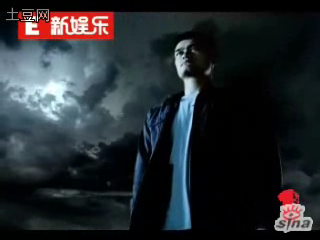Media file:
vid. 4.1
Title:
Chen Kaige, Yao Ming and the Foolish Old Man Moving the Mountains
Source:
Heidelberg catalogue entry, DACHS Archive
Keywords:
Chen Kaige, Yao Ming, advertising, Foolish Old Man Moving the Mountains, contemporary China, red flag, hero, Cultural Revolution
Chen Kaige, Yao Ming and the Foolish Old Man Moving the Mountains

The particular pathos in Chen Kaige’s 2008 short public advertisement film clip, A 2008 Version of Moving the Mountains (2008分之-移山篇), its choice of colour, setting, imagery and rhetorics, are all built upon the Cultural Revolution blueprint and employ important features of Revolutionary Romanticism and Revolutionary Realism. This advertisement, produced by the Shanghai Media Group (上海文广新闻传媒集团, SMG), is a deliberate answer to the Wenchuan earthquake. It aims to reflect the determination of the Chinese people by featuring China’s basket ball star Yao Ming 姚明 (1980–) and describing how he worked his way to fame. At first, Yao Ming is clearly marked as the main hero by lighting effects that highlight his presence in an otherwise extremely uninviting, dark and rocky mountain scene in extremely treacherous weather, with high winds, clouds passing by, and flashes of lightning striking. The background and his image are shown in constant shot-reverse-shot, a technique that draws the audience into the drama. The use of pathetic fallacy here says to viewers, “Our hero is in difficulty!” And yet, the first thing we see him fix his eyes on when he looks up at the stony rocks again is a red flag.
In the next cut, as the camera moves back from his face to the rocks once more, we see a basketball net suspended extremely high up on this rocky mountain. Yao Ming then begins to speak with a very low voice: “When I was small, I heard a story called The Foolish Old Man Who Moved Mountains” (小时候听过一个故事叫愚公移山). The clip makes constant cuts between his face in the darkness of the mountain scene and images of him playing basketball, jumping up to the net, which is shown in extreme close up, never as a whole but always fragmented and in a blur. He then continues to speak, quoting a line by Su Xun 苏洵 (1009–66), who, in his The Art of the Heart (心术 Xinshu), says that one has to learn to “remain stoic even when Mount Tai collapses” (泰山崩于前而不变色). While these words are spoken, the scene changes drastically. The basketball images show Yao Ming (in a red jersey) raising his fist (not unlike Cultural Revolution heroes in the model works) in victory. We hear applause and spectators screaming, cross-faded with the sonorous soothing sounds of a cello playing a soaring melody featuring two dramatic rising minor seconds and a victorious rising fourth. In the next cut, the red flag flutters gently in the wind on the now much more rugged-looking rocky mountain behind which the sun is rising. This image then fades again into one epitomizing a Cultural Revolution cliché: it shows Yao Ming in a bounteous wheat field heavy with fruit, walking towards the beautifully colored sky with a huge rising sun warming the entire scene.
There are obvious differences—such as the fragmentations, the quick changes in cuts and perspectives, etc.—between this depiction of Yao Ming and earlier Cultural Revolution filmmaking and artistic rhetoric. But there are many continuities, too: the sense of crisis built up in the beginning and eventually victoriously overcome, the special lighting reserved only for our main hero (his face repeatedly appears lit up, making him come across as the only light part in this dark and dismal section of the film), the colors of his dress (red in victory), the red flag, and the rising sun.






































